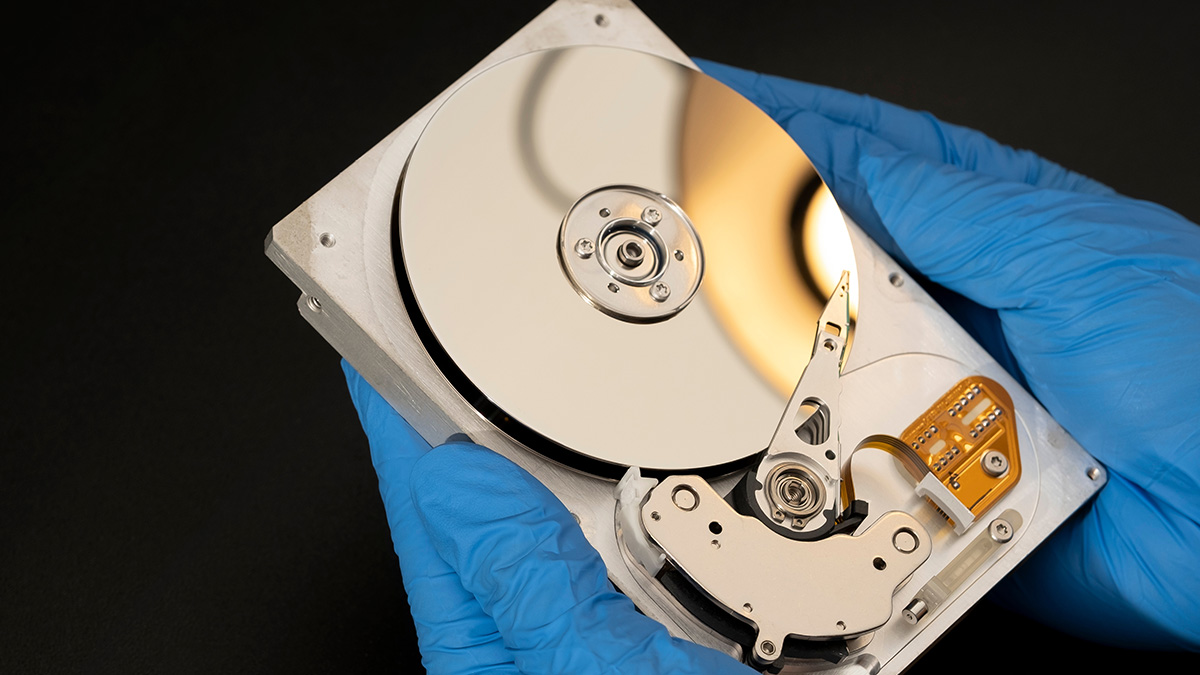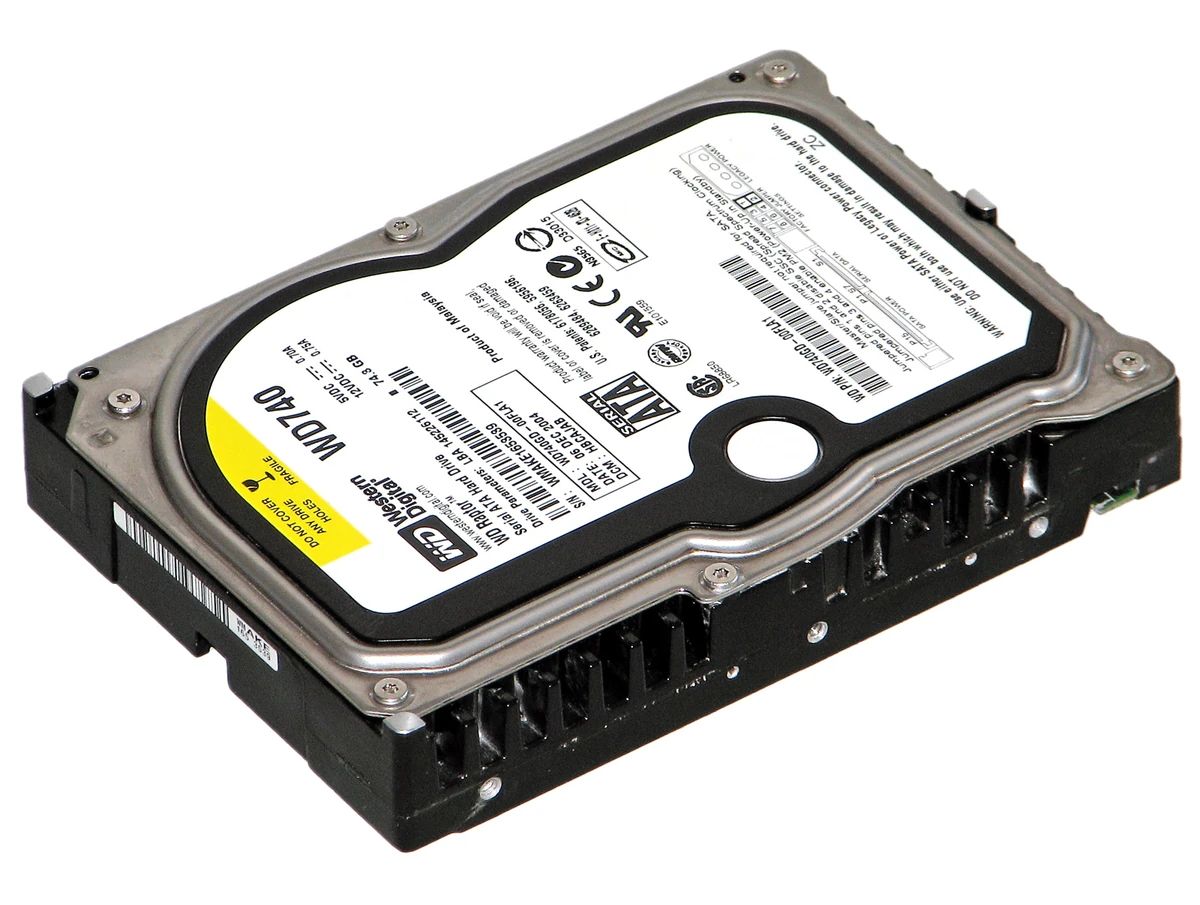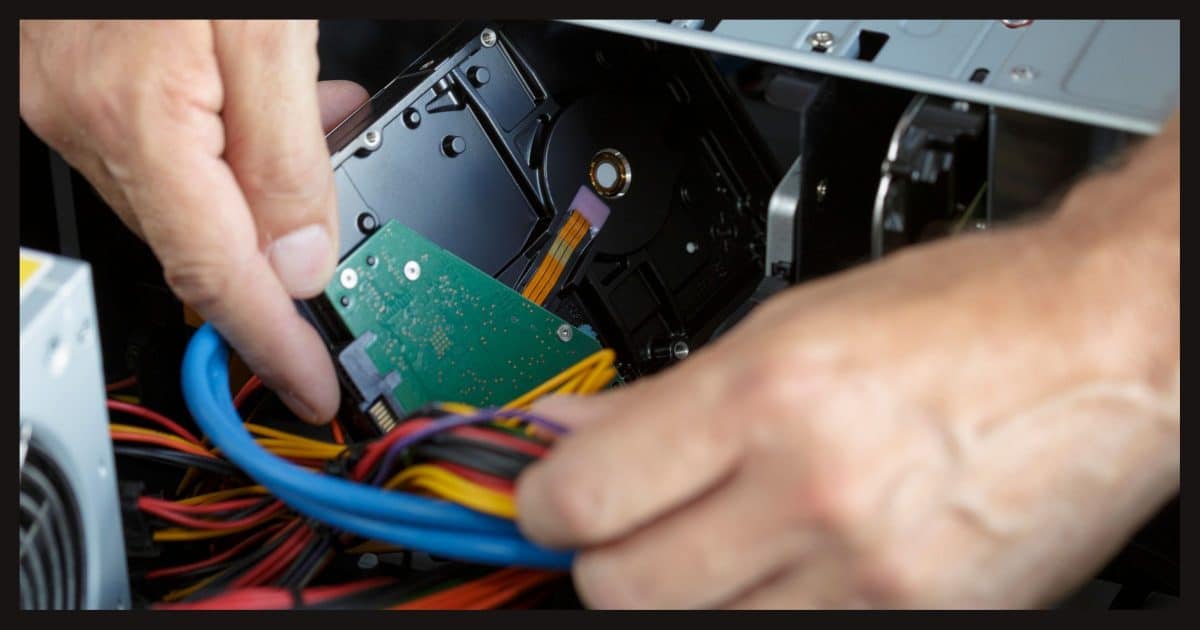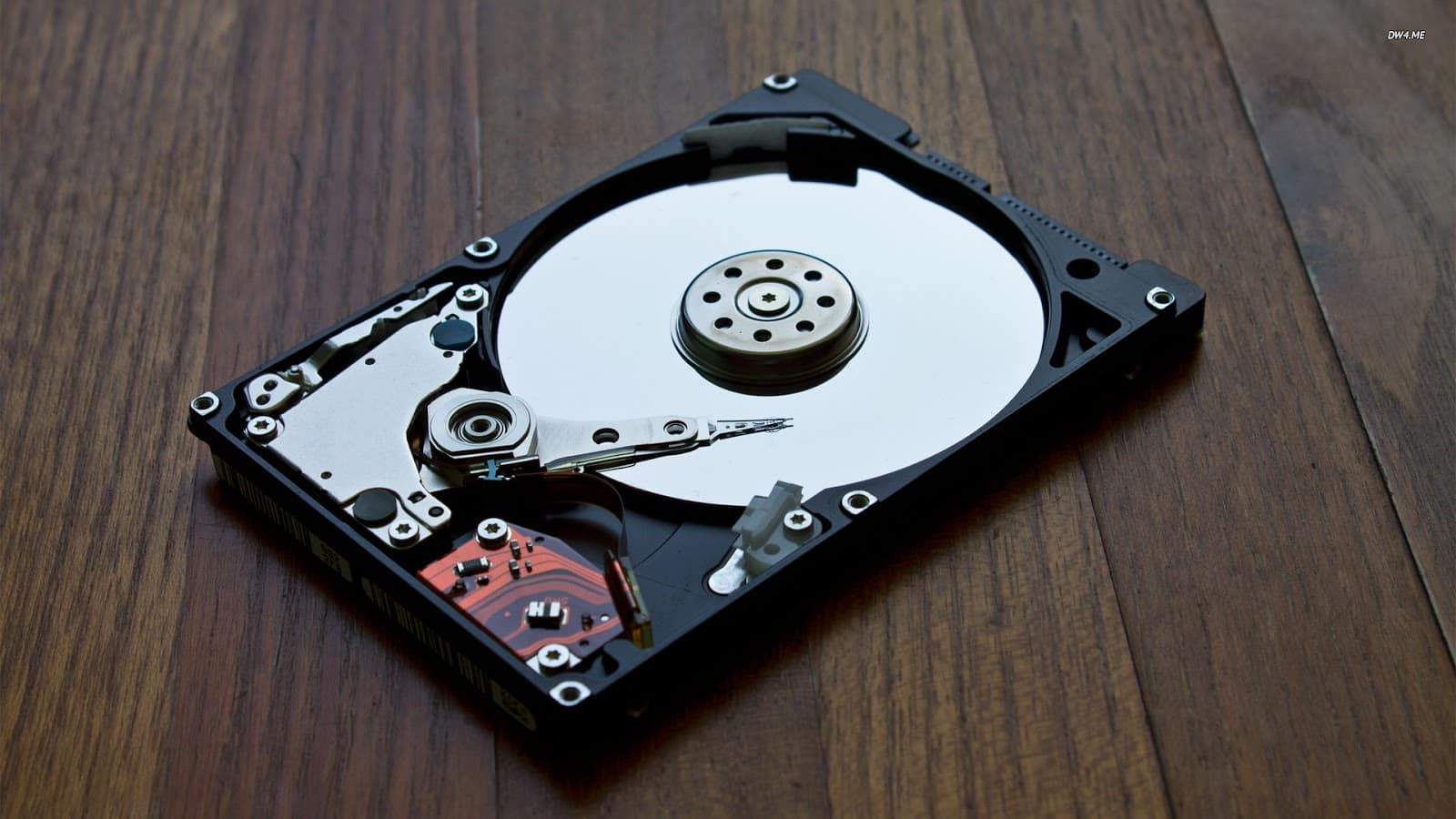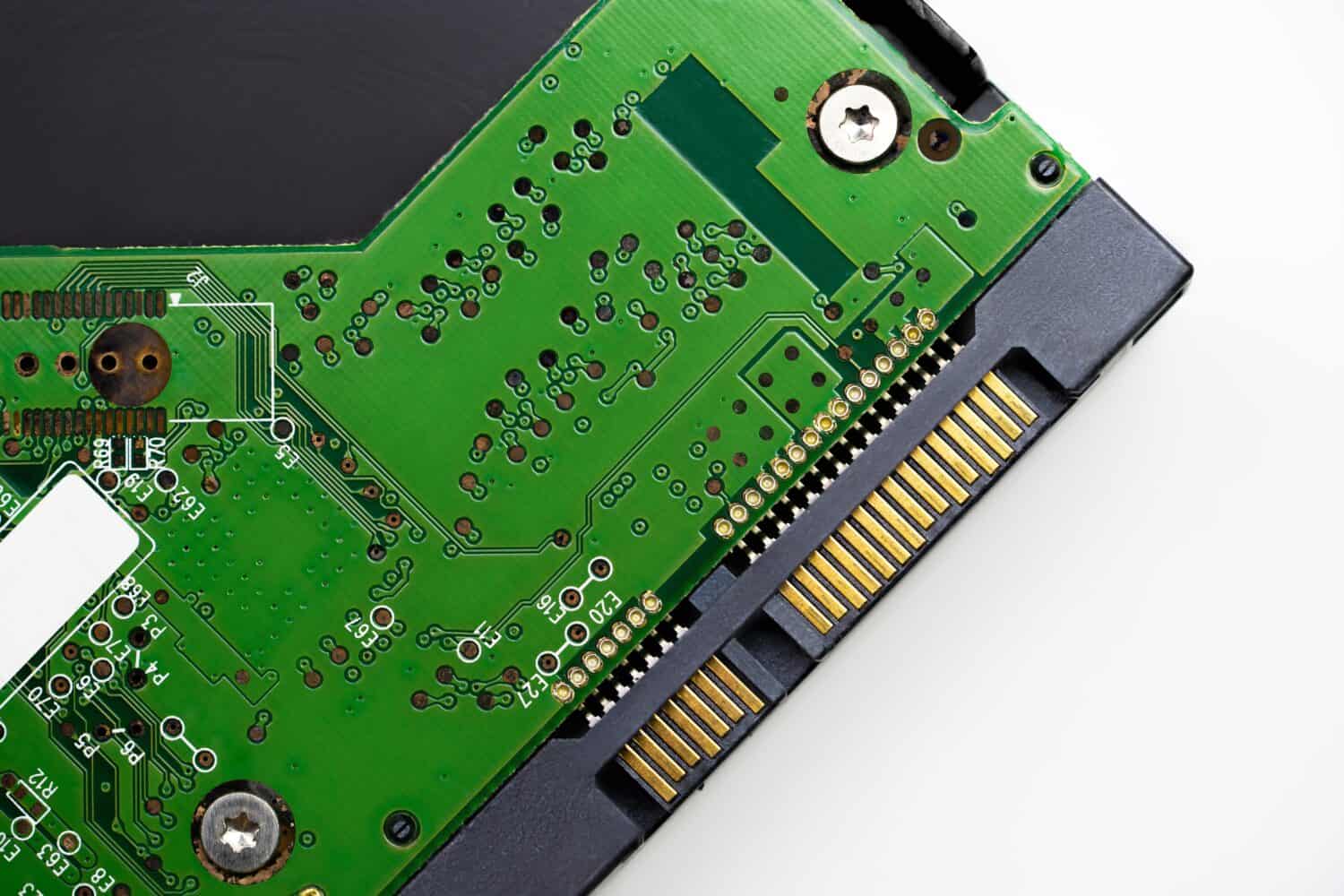Introduction
A hard disk drive, commonly referred to as a hard drive or HDD, is an essential component of modern computer systems. It is responsible for the permanent storage of data, including operating systems, software, and user files. Without a hard drive, a computer would not be able to store and retrieve information efficiently.
Hard disk drives have been a staple in the world of computing for several decades and have undergone significant advancements in terms of capacity, speed, and reliability. They are known for their durability and ability to store vast amounts of data.
In this article, we will delve into the functions of a hard disk drive and explore how it plays a crucial role in the overall functioning of a computer system. From data storage to file organization, data retrieval, and transfer, a hard drive serves as the backbone of data management in a computer. Understanding the functions of a hard disk drive is essential for both computer users and professionals in the field of information technology.
Definition of a Hard Disk Drive
A hard disk drive (HDD) is a non-volatile storage device that is used to store and retrieve digital data. It is a primary storage device in most computing systems and is characterized by its ability to retain data even when the computer is turned off. Unlike temporary storage devices such as random-access memory (RAM), which only holds data temporarily while the system is powered, a hard drive provides permanent storage for files and programs.
The main components of a hard disk drive include one or more magnetic disk platters, read/write heads, and a motor to spin the platters at high speeds. The platters are coated with a thin layer of magnetized material, and the read/write heads move across the surface of the platters to read or write data magnetically.
Hard disk drives come in various form factors and capacities, ranging from small laptop-sized drives to larger desktop-sized drives. They are typically connected to the computer’s motherboard via an interface such as Serial ATA (SATA) or SCSI (Small Computer System Interface).
Unlike solid-state drives (SSDs), which use flash memory for data storage, hard disk drives rely on mechanical moving parts. This mechanical nature makes them susceptible to damage from physical shocks, such as dropping a laptop or desktop. However, advances in technology have made hard disk drives more robust and less prone to failure.
In summary, a hard disk drive is a permanent storage device that uses magnetically coated platters and read/write heads to store and retrieve digital data. It provides long-term data storage for computers and plays a critical role in the overall functioning of a computer system.
Components of a Hard Disk Drive
A hard disk drive (HDD) consists of several key components that work together to store and retrieve digital data. Understanding these components is crucial to comprehend the inner workings of a hard drive.
1. Platters or Disks: The platters, also known as disks, are the circular plates made of non-magnetic material with a thin magnetic coating. These platters are responsible for storing the actual data. Multiple platters are stacked on top of each other and spin at high speeds (typically, 5400 to 7200 revolutions per minute) while the hard drive is in operation.
2. Read/Write Heads: The read/write heads are small electromechanical components that float just above the surface of the spinning platters. They are responsible for reading data from and writing data to the platters. When reading data, the heads detect the magnetic changes on the platter’s surface. When writing data, the heads create magnetic changes on the platter by applying an electrical current.
3. Actuator Arm: The actuator arm is the mechanical arm that moves the read/write heads across the surface of the platters. It positions the heads at the correct location to read or write data on specific tracks of the platters. The actuator arm movement is controlled by an actuator motor based on instructions from the computer’s firmware.
4. Spindle Motor: The spindle motor is responsible for spinning the platters at high speeds. It maintains the consistent rotation required for the read/write heads to accurately access the data. The speed of the spindle motor is measured in revolutions per minute (RPM).
5. Logic Board: The logic board, also known as the controller board or PCB (Printed Circuit Board), is the electronic circuitry that controls the operation of the hard disk drive. It manages the communication between the drive and the computer’s motherboard, handles data transfers, and executes commands related to data storage and retrieval.
6. Casing and Connectors: The hard drive is enclosed in a protective casing that shields the delicate internal components from external factors. The connectors on the drive allow it to be connected to the computer’s motherboard or other devices via the appropriate interface, such as SATA or SCSI.
In summary, the components of a hard disk drive include the platters or disks, read/write heads, actuator arm, spindle motor, logic board, and casing with connectors. Each component plays a crucial role in the functioning of the hard drive and contributes to the overall storage and retrieval of digital data.
Functions of a Hard Disk Drive
A hard disk drive (HDD) performs several essential functions that contribute to the overall storage and retrieval of digital data in a computer system. Understanding these functions sheds light on the crucial role a hard drive plays in data management and computer operation.
1. Data Storage: The primary function of a hard disk drive is to provide long-term storage for digital data. It stores the operating system, software applications, user files, and other data permanently, even when the computer is turned off. The large capacity of modern hard drives allows for the storage of vast amounts of data, making them ideal for multimedia content and data-intensive applications.
2. File Organization: Hard disk drives organize data into files and directories. They use a file system, such as NTFS (New Technology File System) or FAT32 (File Allocation Table), to manage the organization and structure of the stored data. The file system keeps track of the location of files on the hard drive, allowing for easy retrieval and management of data.
3. Data Retrieval and Reading: When a computer requests access to a specific file or program, the hard drive retrieves the requested data by reading it from the appropriate location on the platters. The read/write heads move to the specific track and sector where the data is stored, and the read operation takes place. The retrieved data is then sent to the computer’s memory for processing and execution.
4. Data Writing and Recording: Hard drives facilitate data writing by encoding and recording data onto the magnetic surface of the platters. When the computer instructs the hard drive to store new data or modify existing data, the write operation occurs. The read/write heads align and magnetize the platter’s surface to represent the binary data, thus encoding the information onto the hard drive.
5. Data Transfer and Communication: Hard disk drives are responsible for transferring data between the computer and the storage medium. They have a built-in interface, such as SATA or SCSI, which allows for high-speed data communication with the computer’s motherboard. The transfer rate, measured in megabytes per second (MB/s) or gigabits per second (Gb/s), determines the speed at which data can be read from or written to the hard drive.
6. Data Backup and Recovery: Hard drives play a critical role in data backup and recovery. By creating copies of important files and storing them on a separate hard drive, users can protect their data from loss or damage. Additionally, in the event of a system failure or data loss, the hard drive can be used for data recovery purposes by retrieving backed-up data and restoring it to the computer system.
In summary, the functions of a hard disk drive include data storage, file organization, data retrieval and reading, data writing and recording, data transfer and communication, and data backup and recovery. These functions are vital for managing and accessing digital data efficiently, making the hard drive an indispensable component of modern computer systems.
Data Storage
One of the primary functions of a hard disk drive (HDD) is to provide storage for digital data. Hard drives offer a reliable and permanent storage solution for various types of data, ranging from the operating system and software applications to user files, documents, photos, videos, and more.
Hard disk drives have significantly evolved in terms of capacity, allowing for the storage of vast amounts of data. Today, hard drives can offer terabytes (TB) or even petabytes (PB) of storage space, making them suitable for storing extensive multimedia libraries, databases, and other data-intensive applications.
The stored data remains on the hard drive even when the computer is turned off, thanks to the non-volatile nature of hard drives. This means that users can power on their computers and access their files and programs instantly, without the need for a time-consuming data retrieval process.
Hard drives use magnetically coated platters to store data. The read/write heads, which are positioned just above the spinning platters, read and write the data magnetically. The binary data is represented as magnetic changes on the platter’s surface, with a magnetic north or south orientation indicating the 1s and 0s of digital information.
The ability to store data on a hard drive is critical for both individual users and organizations. Users can save personal documents, photos, and videos without the need for external storage devices. Businesses and institutions rely on hard drives to store critical data such as customer records, financial information, and system backups.
Hard drives offer advantages over other storage solutions, such as solid-state drives (SSDs), in terms of capacity and cost. While solid-state drives have faster read and write speeds, hard drives provide a more cost-effective solution for bulk data storage needs.
It is worth noting that hard drives are not infallible and can experience failures or data loss due to physical damage, electronic failures, or file system errors. Therefore, it is essential to regularly back up important data to separate storage devices or utilize cloud-based backup solutions to prevent data loss and ensure data availability even in the face of hard drive failure.
In summary, data storage is a fundamental function of a hard disk drive. The large capacity and permanent nature of hard drives make them ideal for storing a wide range of digital data, providing easy access to files and programs for both personal and professional use.
File Organization
A hard disk drive (HDD) plays a crucial role in the organization and management of digital data through file organization. File organization refers to the structuring and arrangement of files and directories on a hard drive, enabling efficient data retrieval and management.
When storing data on a hard drive, the operating system assigns a specific file system to organize the data. Common file systems include NTFS (New Technology File System), FAT32 (File Allocation Table), and exFAT (Extended File Allocation Table). These file systems provide a hierarchical structure that organizes files into directories (also known as folders) and subdirectories.
The file system allows users to create, rename, move, and delete files and directories, as well as organize them in a logical manner. Organizing files into relevant directories makes it easier to locate and access specific data when needed.
Directories act as containers for files and can be nested within each other to create a hierarchical structure. For example, a user may have a directory for documents, with subdirectories for different types of documents such as work-related documents, personal documents, or academic documents. This hierarchical structure allows for a systematic organization of files, making it easier to navigate and manage data.
File organization also encompasses the use of metadata, such as file names, file extensions, file sizes, and creation dates, to provide additional information about each file. This metadata aids in identifying and categorizing files, enabling users to search for specific files based on various criteria.
In addition to manual file organization by users, operating systems and applications often have built-in algorithms and indexing systems that help organize and access files efficiently. These systems utilize file headers, directory tables, and file allocation tables to keep track of the location and status of files on the hard drive.
Efficient file organization on a hard drive improves overall system performance and productivity. It allows for faster data retrieval, reduces clutter, and makes it easier to maintain an organized file structure. With well-organized files, users can quickly locate and access the desired data, whether it be a document, photo, video, or any other type of file.
It is important for users to regularly manage and organize files, ensuring that the hard drive is not overcrowded with unnecessary files and that files are stored in a meaningful and intuitive manner. This practice helps maintain an efficient file system and prevents data fragmentation, which can affect the performance of the hard drive.
In summary, file organization is a critical function of a hard disk drive. By using file systems, directories, and metadata, hard drives enable users to structure and arrange their digital data in an organized and easily accessible manner. Effective file organization enhances data management, improves system performance, and supports efficient workflow for both individuals and organizations.
Data Retrieval and Reading
Data retrieval and reading are key functions of a hard disk drive (HDD). When a user or a computer system requests access to specific data stored on the hard drive, the HDD retrieves and reads the data, making it available for processing and use.
When a user or an application requests to open a file, the operating system sends a command to the hard drive to retrieve the requested data. The hard drive, equipped with read/write heads, accesses the correct location on the spinning platters where the data is stored.
The read/write heads of the hard drive move across the platter’s surface to read the binary data magnetically encoded onto the magnetic coating. The heads detect and interpret the magnetic changes, translating them into the requested data in a language that the computer can understand.
The data retrieval process involves precise positioning of the read/write heads, known as seeking, to the specific track and sector that contains the requested data. This seeking operation must occur quickly and accurately to minimize the time it takes to access the data.
Once the heads reach the correct location on the platter, the data is read by detecting the magnetic changes. The read operation involves converting the magnetic signals into electrical signals that can be interpreted by the computer’s processing unit.
The retrieved data is then sent to the computer’s RAM (random-access memory) for immediate use. The RAM provides fast access to the data, allowing the operating system and applications to work with the information without the need for continuous access to the hard drive.
Data retrieval and reading from a hard drive need to be efficient in order to prevent delays and ensure smooth system operation. Factors that affect the speed of data retrieval include the rotational speed of the platters, the data transfer rate between the hard drive and the computer, and the seek time of the read/write heads.
In modern hard drives, caching mechanisms are often used to improve data retrieval speed. Frequently accessed data is cached in the RAM or in a small portion of the hard drive itself known as the cache buffer. This allows for faster access to commonly used data without the need to retrieve it from the spinning platters.
Efficient data retrieval is crucial for overall system performance and user experience. A well-functioning hard drive with fast data retrieval capabilities allows for quick access to files, applications, and operating system components, ensuring smooth multitasking and efficient workflow.
It’s important to note that hard drives, like any other mechanical devices, have limitations. Over time, hard drives may experience aging or mechanical failures that can result in data retrieval issues. Regular backups of important data and the use of redundant storage solutions can help mitigate the risk of data loss in such cases.
In summary, data retrieval and reading are essential functions of a hard disk drive. By retrieving requested data from the spinning platters and providing it to the computer’s RAM for immediate use, hard drives enable quick access to files, applications, and operating system components, contributing to efficient system performance and user productivity.
Data Writing and Recording
Data writing and recording is a critical function of a hard disk drive (HDD). When a user saves a file or modifies existing data, the HDD encodes and records the data magnetically onto the spinning platters, ensuring its permanence and availability for future use.
When a computer system instructs the hard drive to write data, the hard drive prepares the specific location on the platters for data storage. The read/write heads move to the correct track and sector where the data is to be written.
Once positioned, the hard drive’s write operation begins. The read/write heads induce changes in the magnetic coating of the platters, aligning the magnetic particles in a way that represents the binary data. These changes are permanent and will remain on the platters until modified or overwritten in the future.
The write operation involves applying a low-level electrical current to the read/write heads. This current generates a magnetic field that affects the magnetization of the platter’s surface, effectively encoding the desired data.
The data writing process requires precision and accuracy to ensure the integrity and reliability of the stored information. The hard drive’s firmware and internal mechanisms play a key role in guaranteeing the accuracy of the data writing process.
Hard drives use complex error correction algorithms and mechanisms to detect and correct errors that may occur during the writing process. These mechanisms help maintain data integrity and reduce the chances of data corruption on the hard drive.
Data writing and recording are not limited to new data. When a user modifies an existing file or saves changes, the hard drive updates the specific portion of the platter where the data is stored. This process involves a combination of reading, modifying, and writing the data, ensuring the changes are accurately reflected on the hard drive.
The ability to write and update data is crucial for various tasks and applications. Users can create and save new files, edit documents, modify multimedia content, and install software programs. All these actions rely on the hard drive’s capability to write data promptly and accurately.
It’s important to note that while hard drives provide a reliable storage solution, they do have limitations. Over time, certain sectors on the platters may become damaged or develop errors, resulting in data writing issues. Regular maintenance, such as disk scanning and error correction, can help identify and fix such problems to ensure data integrity.
In summary, data writing and recording are key functions of a hard disk drive. By encoding and recording data magnetically onto the spinning platters, hard drives ensure the permanence and availability of information for future use. These functions enable users to create, modify, and store data with reliability and accuracy.
Data Transfer and Communication
Data transfer and communication are vital functions of a hard disk drive (HDD). Hard drives are responsible for transferring data between the computer system and the storage medium, facilitating efficient communication and seamless data access.
Hard disk drives have built-in interfaces that allow them to connect to the computer’s motherboard or other devices. The most common interface used in modern hard drives is Serial ATA (SATA), although other interfaces such as SCSI (Small Computer System Interface) are also used in certain applications.
The interface determines the speed and mode of data transfer between the hard drive and the computer. It enables high-speed communication, ensuring that data can be read from and written to the hard drive quickly, minimizing latency and improving overall system performance.
The transfer rate of a hard drive refers to the rate at which data can be read from or written to the drive. It is typically measured in megabytes per second (MB/s) or gigabits per second (Gb/s). Hard drive manufacturers specify the transfer rate as part of the drive’s specifications.
Efficient data transfer is crucial for tasks such as loading operating systems, launching applications, and accessing large files. The faster the data transfer rate, the quicker the system can respond to user commands and process data, resulting in a smoother user experience.
In addition to data transfer within the computer system, hard drives can also communicate externally with other devices or storage systems. This is particularly important in enterprise environments where multiple hard drives may be connected, forming a storage array or network-attached storage (NAS) system.
Hard drives in a network storage environment often utilize protocols such as Ethernet or Fibre Channel to facilitate data transfer and communication between the drives and the connected devices. This allows for centralized storage and sharing of data across the network, promoting collaboration and data accessibility.
The hard drive’s ability to transfer and communicate data efficiently is crucial in various industries and applications. In sectors such as digital content creation, video production, and data-intensive scientific research, the ability to transfer large amounts of data quickly is essential for smooth workflows and timely project completion.
It is important to note that data transfer performance can be influenced by various factors, including the capabilities of the hard drive interface, the data cable quality, and any potential bottlenecks within the computer system. Optimizing these factors can enhance data transfer speeds and improve overall system performance.
In summary, data transfer and communication are important functions of a hard disk drive. Hard drives enable high-speed data transfer between the computer system and the storage medium, allowing for efficient data access, quick application loading times, and seamless collaboration in network storage environments.
Data Backup and Recovery
Data backup and recovery are crucial functions of a hard disk drive (HDD), ensuring the protection and availability of data in case of unexpected events such as system failures, data corruption, or accidental deletion.
1. Data Backup: Hard drives play a significant role in data backup processes. By creating duplicate copies of important files and storing them on separate storage devices, users can safeguard their data against potential loss or damage. Regular backups provide a safety net in the event of hardware failures, malware attacks, or natural disasters.
Backup solutions can be implemented using various methods, including manual file copying, using built-in backup tools within operating systems, or utilizing specialized backup software. The chosen method depends on the level of data security required, the amount of data to be backed up, and the user’s preferences.
Hard drives offer ample storage capacity, making them suitable for backing up large volumes of data. Additionally, hard drives are portable, allowing users to store backups on external drives or network-attached storage (NAS) systems for added convenience and accessibility.
2. Data Recovery: Hard drives also play a critical role in data recovery processes. In the event of data loss due to hardware failures, accidental deletion, or system crashes, the ability to recover data from the hard drive becomes essential.
Data recovery involves retrieving lost or inaccessible data from the storage medium, such as a failed hard drive or a damaged file system. Various techniques and software tools are available to recover data, with the success of recovery depending on the nature and extent of the data loss.
Hard drives can be used in data recovery processes to retrieve backed-up data from storage devices. By accessing the duplicate copies stored on separate hard drives or other backup media, users can restore their lost data to the original or alternative storage location.
In addition to traditional backup solutions, cloud-based backup services are gaining popularity. These services utilize remote servers to store data offsite, providing an extra layer of protection against physical damage, theft, or other local disasters.
For effective data backup and recovery, it is essential to follow best practices such as regular backups, multiple backup copies, and periodic verification of the backup integrity. Additionally, it is important to ensure that the backup solution supports easy and efficient recovery of the backed-up data.
It’s worth noting that while hard drives are reliable storage devices, they are not immune to failures or data loss. Mechanical failures, electronic issues, or even user errors can lead to data loss on the hard drive itself. Therefore, utilizing redundant backup solutions and periodically testing the backup and recovery processes is essential to mitigate the risk of data loss.
In summary, data backup and recovery are vital functions of a hard disk drive. By creating duplicate copies of important data and storing them on separate storage devices, hard drives enable data protection against various types of data loss. In the event of data loss, hard drives are used in the recovery process to retrieve and restore the backed-up data, ensuring the availability and integrity of valuable information.
Conclusion
A hard disk drive (HDD) serves as a critical component in the modern computer system, offering several essential functions that are vital for data management, storage, and accessibility. Understanding the functions of a hard drive is crucial for computer users and IT professionals, allowing them to utilize its capabilities effectively.
Throughout this article, we explored the various functions of a hard disk drive. We learned that data storage is the primary function of a hard drive, providing a permanent and reliable solution for storing operating systems, software applications, and user files.
We also discussed the importance of file organization, which allows for systematic structuring and arrangement of files and directories on the hard drive. By utilizing file systems and metadata, users can navigate and manage their data efficiently.
Data retrieval and reading are critical functions that allow for the quick and accurate retrieval of data from the hard drive. The read/write heads access the appropriate location on the spinning platters, providing the requested data for processing and use.
Data writing and recording enable the hard drive to encode and store data magnetically on the platters. This function ensures the permanence and availability of data, allowing users to create, edit, and save files with confidence.
Data transfer and communication facilitate efficient data exchange between the hard drive and the computer system. The interface and transfer rate of the hard drive contribute to fast data access and improved system performance.
Lastly, data backup and recovery are crucial functions for protecting valuable data from loss or damage. By creating duplicate copies of important files and implementing backup solutions, users can recover their data in the event of hardware failures or data corruption.
Understanding these functions empowers users to make informed decisions regarding data management, storage, and backup. Whether it’s selecting the right hard drive for their needs, organizing files effectively, or implementing backup strategies, users can optimize their usage of hard drives to enhance productivity and safeguard valuable data.
In conclusion, the functions of a hard disk drive are integral to the performance and functionality of a computer system. The ability to store, organize, retrieve, transfer, and safeguard data makes the hard drive an indispensable component in modern computing. With ongoing advancements in hard drive technology, we can expect even more efficient and innovative solutions that further enhance data management and accessibility.







